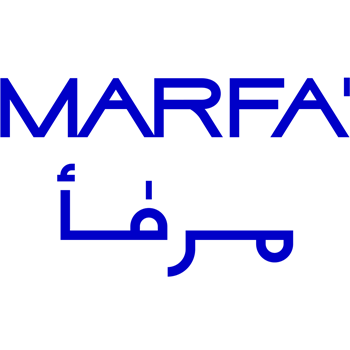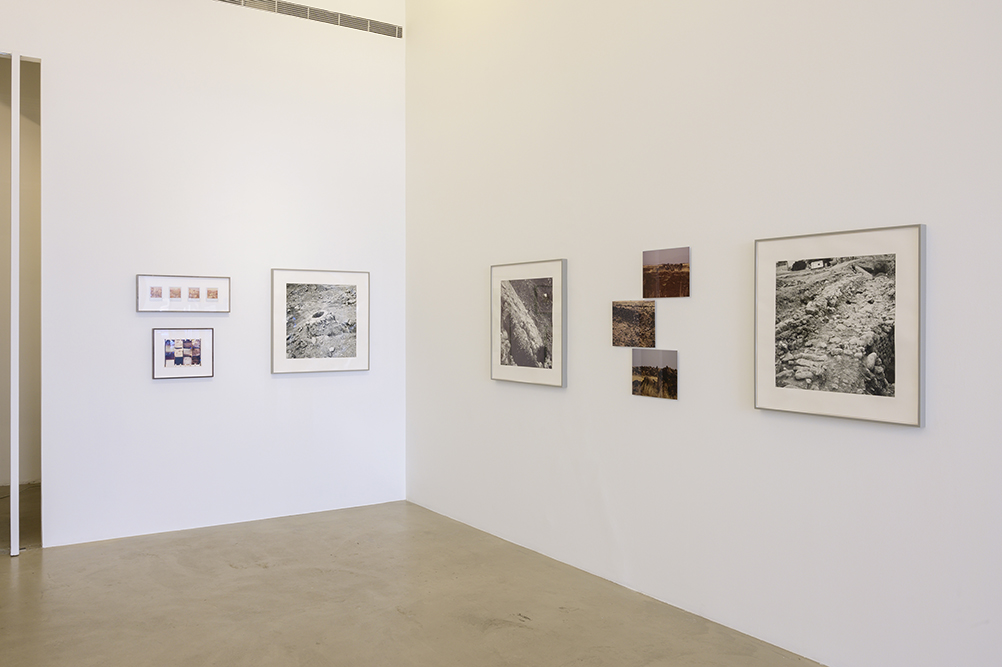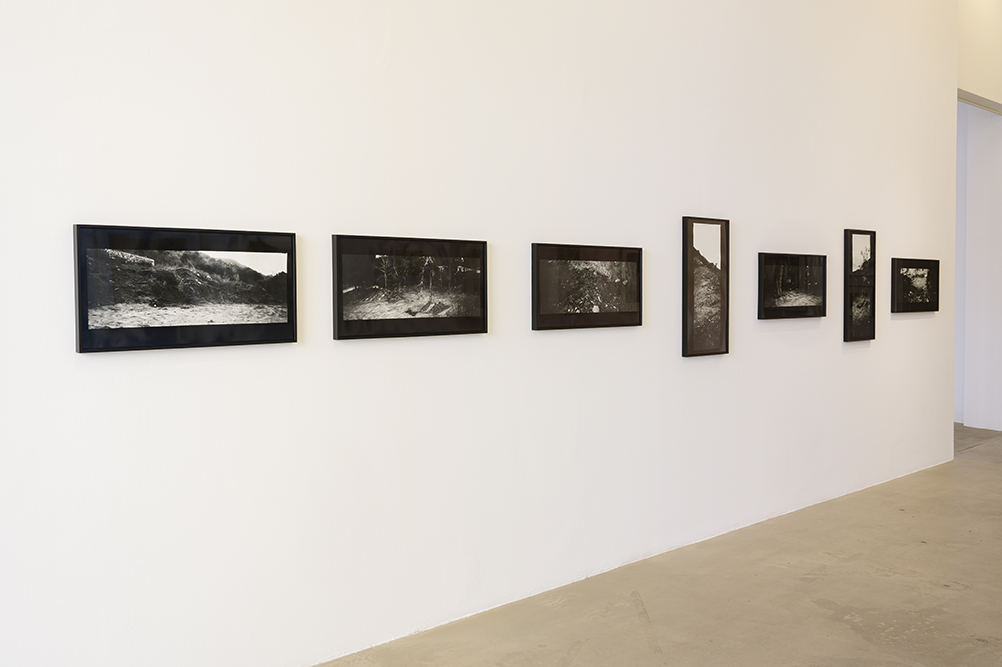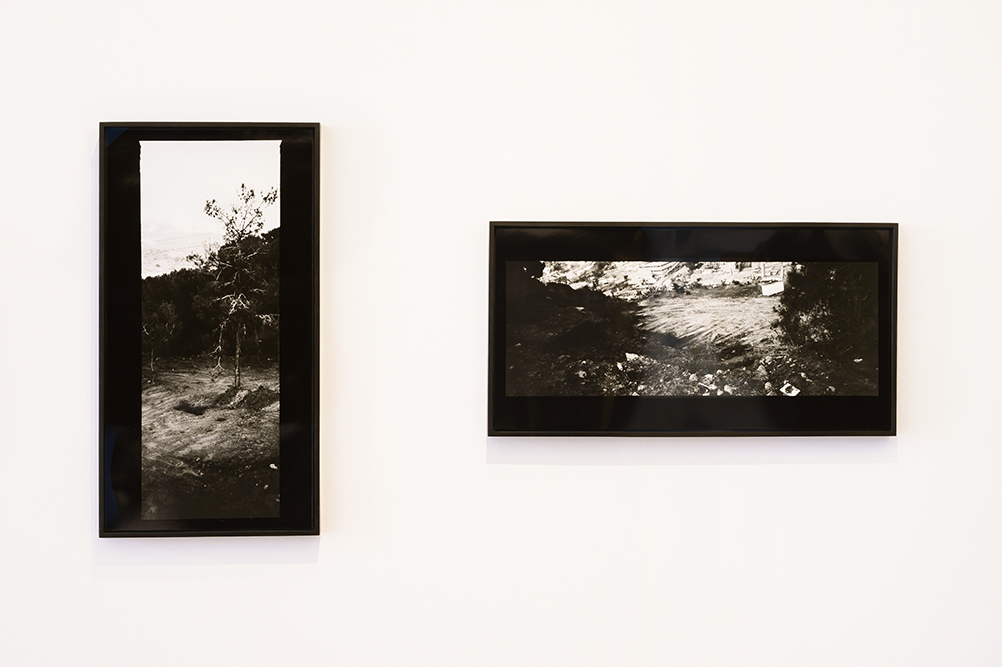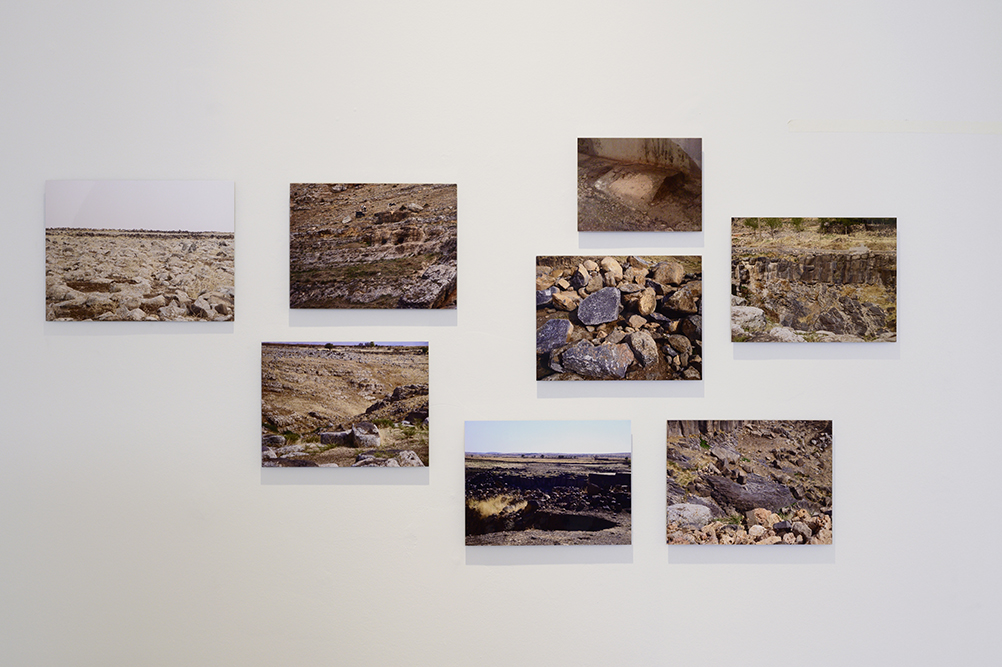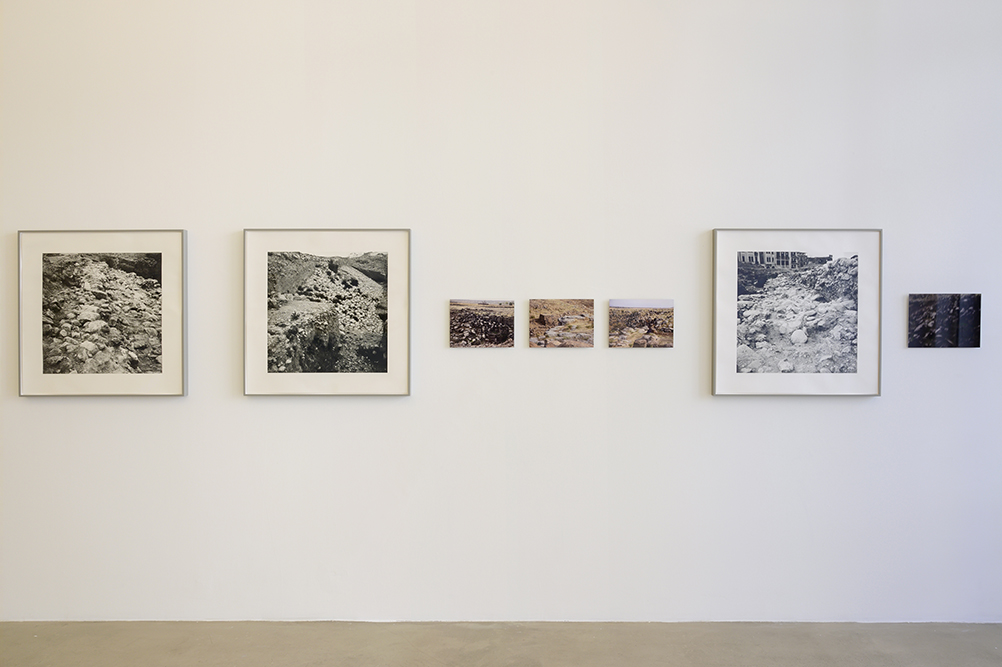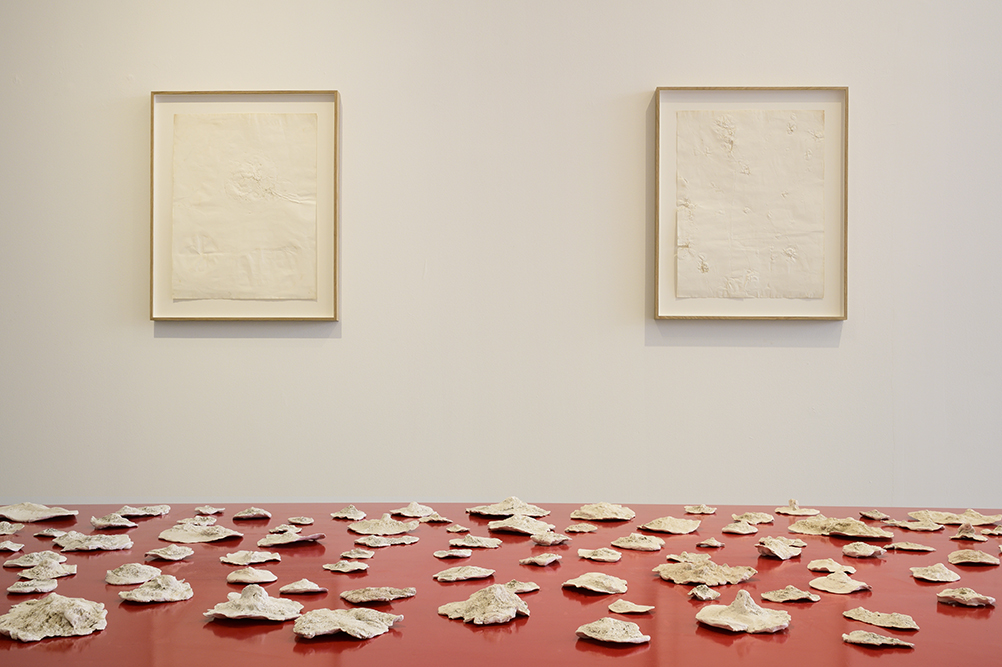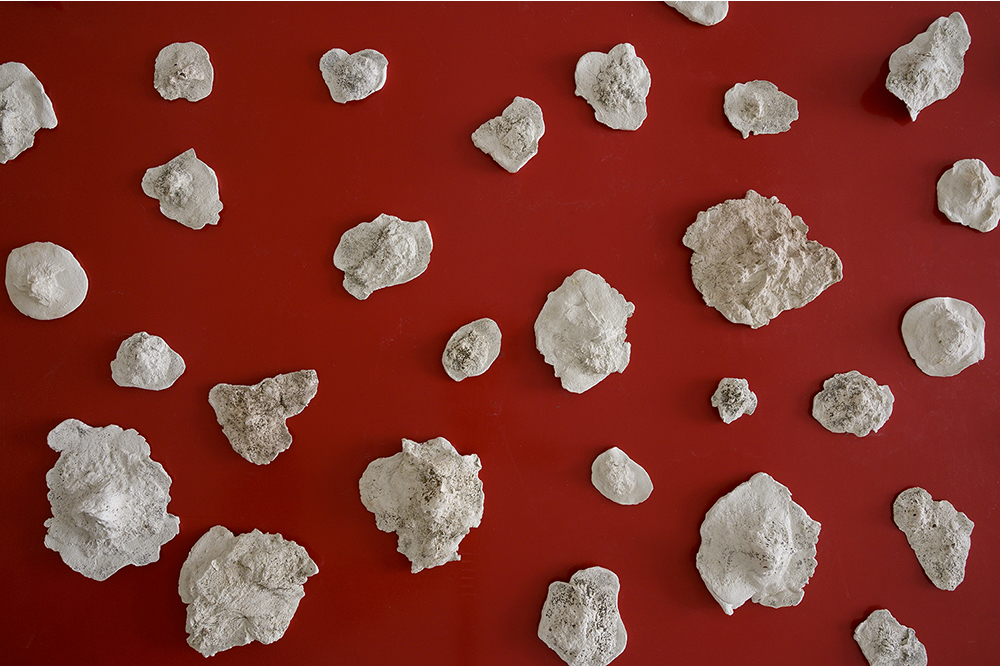Paola Yacoub
Radical Grounds
19 September - 18 January 2020
Radical Grounds brings together a group of photographs of the ground taken between 1990 and 2012 in the region that stretches from Lebanon to Kurdistan. They represent grounds, heaps of pebbles, white and black stones, sometimes flat and sometimes sloping, at other times uneven and broken. Most are indeterminate aediculae that are sometimes hardly distinguishable from any other accident on the ground. But they also present a game with the perspective from which the photograph was taken. The angle of the lens directed towards the ground varies, delimited by both the overhanging frame of the photograph and the landscape. We can deduce the distance from which the photograph was taken, and the stability or instability of the shot. Thus, the soil intervenes as the view and aim of the action, and as its ground.
These grounds may have been trampled, may or may not have been laboured over or neglected. We might be inclined to try to know more about their subject matter, to decipher them, to deduce whether these grounds are dangerous, perhaps concealing landmines. These photographs may be saturated with information, narratives, or bring together various collages. They remain a simple collection of images of the ground.
But a priori the artist is engaged on these grounds, and she must verify them before photographing, at times even evaluating their danger. The act of photographing combines a number of elements that can construct other horizons of meaning.
On the one hand, these grounds are the subject of the photographs, they disable the expected pathos in the iconography of the region. There’s something lowly about the ground, the mud, the rubble. It’s no longer possible to sanctify it, at least as native or ancestral ground, or as the tombs of martyrs. On the other hand, these grounds are the basis for the artist’s engagement, she’s implicated in the scenes constituted on these territories, in the dramas which play out on them, the outlines of human actions. These photographs then deactivate the anaesthetising grammars deployed by wars at the scale of populations with their growing use of drone shots, or even with various sceptical postures, whether imposed or conventional.
Collected in this way, these photographs remain immanent to the intentional action of taking a photograph. In this sense, they are radical. They contribute to elucidating the historical conditions of a concrete photographic practice.
